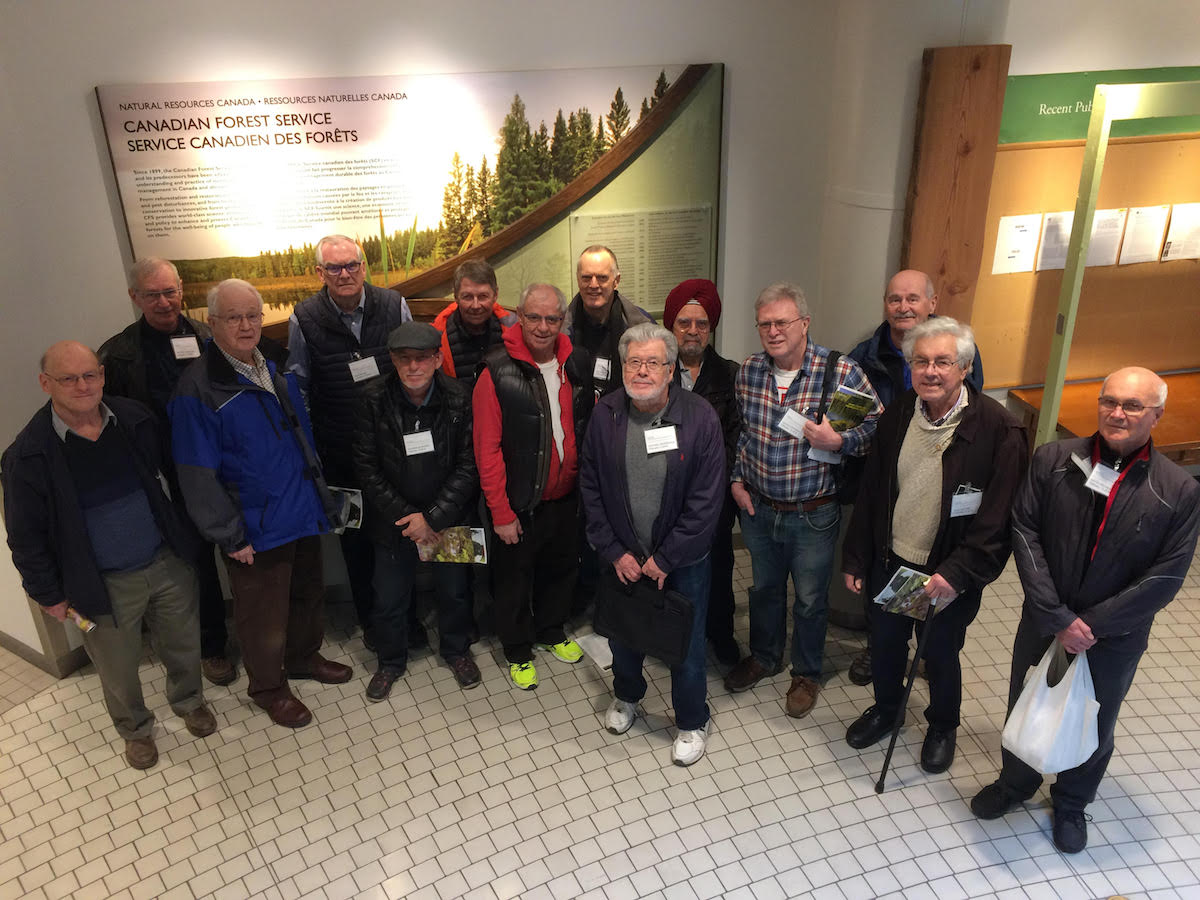This was an excellent tour, very well organized and executed by our hosts. The tour started with an overview of the Pacific Forest Research Centre, its national mandate, and how its responsibilities relate to those of provincial governments.

The Director of the Economics and Market Research Centre then provided an overview of key international economic and market research issues facing the forest sector in Canada.
A visit was then made of the Entomology Laboratory where a discussion of Pine Beetle Research took place with the lead scientist. We then went to the Insectarium to discuss the work there to mitigate the entry of pests through wood products into and within the country. From there we were toured through the Analytic Lab. The final leg of the tour showed us a wide diversity of living research projects in the greenhouse. It also served as an excellent way to bring together the other elements of the tour and how they all fit together in the work of the Centre. And we didn’t have time to see the DNA lab, the on-going work and tools to maintain the national forest inventory, remote sensing and mapping, and firefighting support!
Given the enthusiasm and interest that all researchers demonstrated in their work it was difficult not to pick-up on their positive energy and the pride in the Science they are undertaking.
I was somewhat acquainted with forests in India, having been exposed to them with my Dad who was in the lumber business. The word forest used to bring memories of trees, rivers (not many lakes in the Indian forests I went to), birds and wild animals (including leopards and tigers). The tour on Feb. 13th reminded me of the time my wife and I came to Canada, in pre-internet days. We took the train from Montreal to Edmonton, since we wanted to see Canada. The main memory of that train ride was the extent of the forests, lakes, rivers, rocks, large farms, and grain elevators!

While the areas of work covered at the Pacific Forestry Research Centre are appropriate and not surprising, I had never stopped and thought of chemical analyses, insect identification, study of fungi, growth in hot houses, aspects of forest fires, economic aspects of forestry, and so much more (that are being done there), all at the same time. The building houses a brain trust of more than 100 scientists (Masters and PhDs), it is well designed for research and is being used effectively. As a scientist I do not remember visiting any good scientific laboratory and not coming out of it feeling that they need more support. I had the same feeling on Feb. 13th; they are doing very good work for our forests and they could use more support!
The diversity of trees in Canada’s forests is well illustrated by the trees on the David Douglas Trail, also a part of the Pacific Forestry Centre. It is open to the public, and I wanted to go on it. However, the tour of the Forestry Research Centre itself took quite some time, so I will have to return on a warmer sunny day for that walk. I understand the trees are well marked with their names, etc. and it takes about one hour. School children in Greater Victoria should have it on their list of places to visit! The earlier they learn of the diversity and sensitivity of their ‘forestry assets’, the more careful they are likely to be when they visit forests for work or fun.
I would also like to extend a thank you to Marcel Mercier for organizing and leading this tour on behalf of the VMNC.
Submitted by Ajit Singh



